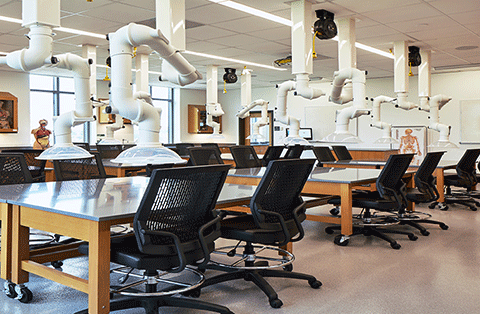How To Calculate The Operating Expenses For Your Laboratory
Operating a successful laboratory requires careful planning. One vital aspect of the planning process is budgeting. Budgeting is the plan to spend money.
Established laboratories rely on past data to create their budgets. But what if past data is not available? How can labs create accurate budgets to avoid surprises later?
This article will take you through budgeting and calculating operating expenses for your laboratory.

UNDERSTANDING THE COSTS
The costing exercise for each laboratory is specific. The elements required for running the lab will differ across industries and the nature of research. Yet the costing method for deriving the operating expenses would fit across the spectrum.
The operating expense is divided into fixed and variable costs, and further sub-divided into direct and indirect costs. Let’s inspect the cost elements.
| FIXED COSTS | Fixed costs remain constant and do not change over time or as the research volume increases or decreases. |
| VARIABLE COSTS | Both time and the volume affect the variable costs. |
| DIRECT COSTS | Direct costs are directly connected to the laboratory output. |
| INDIRECT COSTS | Indirect costs are the overheads not directly connected to the output of the labs |
|
EXAMPLES |
|||
| FIXED – DIRECT | FIXED – INDIRECT | VARIABLE – DIRECT | VARIABLE – INDIRECT |
|
|
|
|
BUDGETING METHODS
Laboratories use various budgeting methods to arrive at their operational expenses, the prominent ones being:
INCREMENTAL BUDGETING:
In this method the previous years’ actual expenses are incremented/deducted by a factor for the upcoming financial year. This is the simplest of the methods, but not helpful where previous year’s data is unavailable.
ZERO-BASED BUDGETING:
This method involves preparing everything from the beginning. The base is zero and budgeting exercise starts from the scratch. It’s a complex process and involves scrutinising and justifying every spend.
TOP-DOWN BUDGETING:
A top-down method is where a budget is allocated from the top levels of the company and trickles down to each department. The budget is set and laboratory managers are required to identify activities within the allocated budget.
BOTTOM-UP BUDGETING:
This method is the opposite of top-down method. In the bottom-up approach the individual departments identify the budget needs and it gets added upwards till the top. While it may be like zero-based method, in the bottom-up usually inputs from previous years are factored in.
BUDGETING MISTAKES TO AVOID
A well-planned budget helps the research teams have a good handle on their yearly spend and activities. Errors in the projected operational expenses may lead to affecting the work at the laboratory.
Let’s turn our focus to the common budgeting mistakes and how to avoid them:
Download for free.
Laboratory Operating Expense Planner
Send download link to:
Comments are closed.











